Bringing drones & LiPo batteries on a plane: What you need to know
Last update on 30.06.2020 | 4 Kommentare
Anyone who wants to set off for faraway countries with a multicopter is often faced with a big riddle: How do I transport my drone on the airplane? Although there is an international guideline, some airlines regulate the transport of drones differently. In this article, I explain what you have to take into account and list the regulations of individual airlines.
Right at the beginning, I would like to reassure you: Transporting a copter on an airplane is usually no problem. We have been traveling around the world with our DJI Phantom for a few years now and there have been no incidents worth mentioning. Nevertheless, there are a few basic things you should be aware of.
Batteries belong in the carry-on bag
Today, almost all drones are powered by a lithium-polymer battery (LiPo for short). They are classified as dangerous goods, because in very rare cases the battery may ignite.
For this reason, you must always carry all drone batteries individually in your carry-on baggage. If the batteries should ignite, you or the crew will be able to react and extinguish the fire.
The probability of a battery fire is low. Nevertheless, you should consider two further measures to minimize the probability of a fire. First of all, you should disconnect the plugs if your batteries have open contacts. This step is not necessary with the more modern Smart Batteries from DJI (I recommend having 2 extra batteries with you when traveling), where the contacts are hidden inside the case. As a second measure, you should pack each battery individually in a LiPo Safe Bag. When packing, also make sure that as little pressure as possible is exerted on the batteries to keep the probability of mechanical failure as low as possible.
Buy a Lipo Safe Bag nowIn order to further reduce the risk of a battery fire, there is often discussion about whether the battery needs to be discharged. LiPo batteries are chemically most stable when stored or transported at about half the charge voltage. It is therefore recommended to discharge the battery to about 50%.
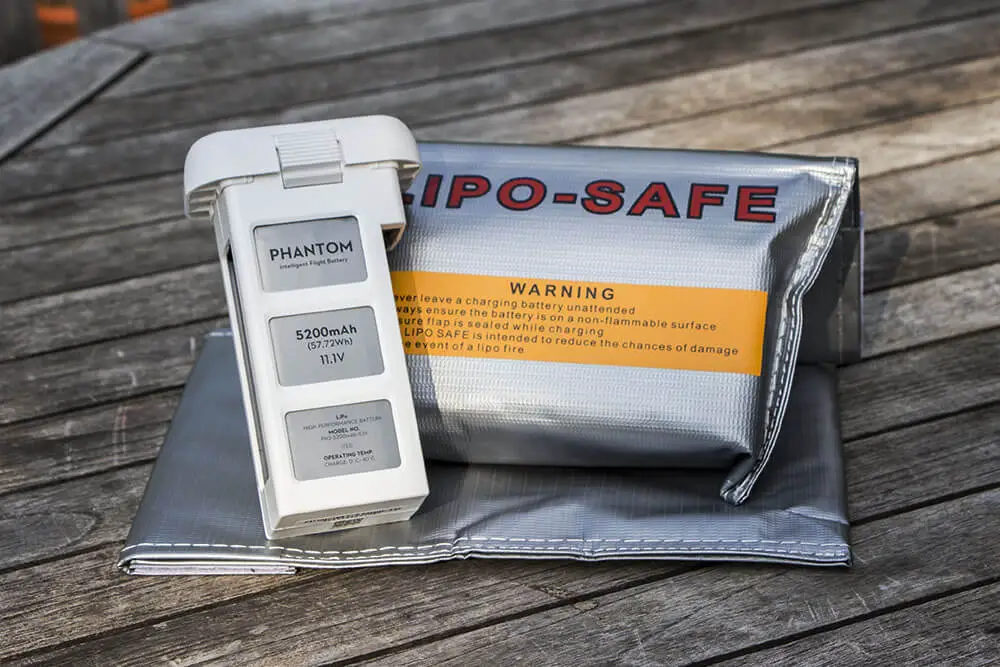
How to transport the drone
As long as you keep the spare batteries in your carry-on, it does not matter how the rest of the copter equipment is transported. You can pack your copter in a special lockable suitcase and check it or you can use a drone backpack as your carry-on bag. I personally prefer the carry-on baggage option, because it minimizes the probability of the drone getting lost. But with larger multi-copters, this is not an option.
In addition, more and more airlines are starting to ban drones in the carry-on baggage. You can find out below which airlines only allow drones in the checked baggage. At the moment, however, they are still in the minority.
The baggage screenings at the airport
At the beginning of our trip, I was always particularly nervous at the baggage screenings. Every time I wondered if the entire drone equipment would be allowed.
Now and then there were questions about what we were transporting. Often an explosives test was also carried out, which meant a swab was taken from the copter and sometimes our hands using a paper strip.
But the longer we were on the road, the more relaxed the security staff became. A copter is no longer a novelty for most security personnel. By the way, we once had to advise a member of the staff about which drone to buy.
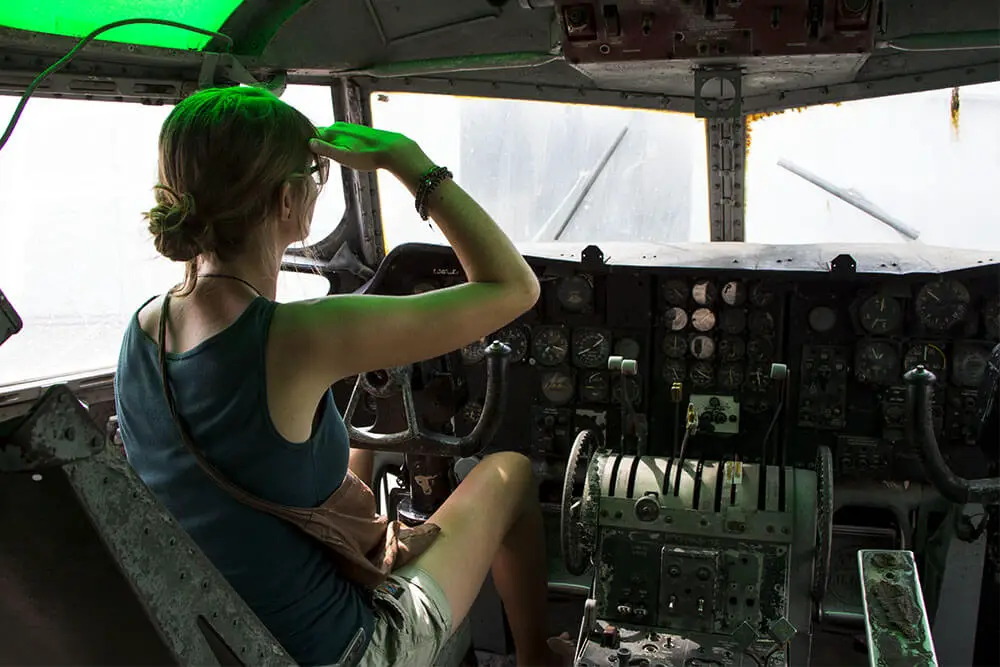
General rules for bringing LiPo batteries on a plane
The transport of LiPo batteries on airplanes is usually limited by the watt-hours (short Wh). If this value is not marked on your batteries, you can calculate the watt-hours by multiplying ampere-hours by the volt-number. A phantom battery with 5,200 mAh and 11.1 V thus has 57.72 Wh (because 5.2 Ah x 11.1 V = 57.72 Wh).
An IATA (International Air Transport Association) guideline recommends the following specifications to airlines:
- Up to 100 Wh: Up to 20 spare batteries can be taken in carry-on baggage
- 100 – 160 Wh: A maximum of 2 spare batteries may be taken along
- More than 160 Wh: Transport only as dangerous goods freight
This is a good guideline, but the airlines are not bound by these provisions and can set their own rules.
I recommend that you follow the above-mentioned rules. Nevertheless, please inform yourself in advance how your airline currently handles the transport of lithium-polymer batteries. To make this step easier for you, I have researched a list of the current regulations of the individual airlines. Please understand that I cannot assume any liability for the correctness of the information. In case of doubt you should contact your airline directly. If you have additional information or a correction, please leave us a comment.
Regulations of the airlines
AirAsia
AirAsia has proven to be extremely tolerant during baggage controls. Some passengers seem to take their entire living room into the cabin. Therefore, on our numerous flights with AirAsia, we have only once experienced that an oversized piece of baggage was not allowed on the plane. Nobody is interested in drones.
The only exception that we have experienced so far: When we flew with AirAsia from Brunei, the airport employees paid very careful attention to the weight of the carry-on baggage. However, we believe that this caution came from the airport and not from the airline.
- Carry-on bag dimensions: 56 x 36 x 23 cm
- Maximum carry-on bag weight: 7 kg
- LiPo battery regulations:
Up to 100 Wh: Allowed
100 – 160 Wh: A maximum of 2 spare batteries may be taken along
More than 160 Wh: Not allowed
Air Canada
- Carry-on bag dimensions: 55 x 40 x 23 cm
- Maximum carry-on bag weight: There is no weight limit, but your bag must be light enough so that you can put it in the overhead bin without assistance.
- LiPo battery regulations: Up to 20 spare batteries are allowed, of that two may have 100 – 160 Wh, carrying batteries with more than 160 Wh is not allowed.
Air France
- Carry-on bag dimensions: 55 x 35 x 25 cm
- Maximum carry-on bag weight: 12 – 18 kg, depending on ticket class
- LiPo battery regulations:
Up to 100 Wh: The airline’s approval is required for more than 20 batteries
100 – 160 Wh: A maximum of 2 spare batteries may be taken along
More than 160 Wh: Not allowed
Air New Zealand
- Carry-on bag dimensions: Total linear dimensions (length + width + height) up to 118 cm
- Maximum carry-on bag weight: 7 -10 kg, depending on ticket class
- LiPo battery regulations:
Up to 100 Wh: Allowed
100 – 160 Wh: A maximum of 2 spare batteries may be taken along
More than 160 Wh: Not allowed
Air Tahiti Nui
- Carry-on bag dimensions: Total linear dimensions (length + width + height) up to 115 cm
- Maximum carry-on bag weight: 10 – 12 kg, depending on ticket class
- LiPo battery regulations:
Up to 100 Wh: Allowed for private use
100 – 160 Wh: A maximum of 2 spare batteries may be taken along
More than 160 Wh: Not allowed
British Airways
- Carry-on bag dimensions: 56 x 45 x 25 cm
- Maximum carry-on bag weight: 23 kg
- LiPo battery regulations:
Up to 100 Wh: Up to 4 spare batteries per person
100 – 160 Wh: A maximum of 2 spare batteries may be taken along
More than 160 Wh: Not allowed
Cathay Pacific
- Carry-on bag dimensions: 56 x 36 x 23 cm
- Maximum carry-on bag weight: 7 – 15 kg, depending on ticket cass
- LiPo battery regulations:
Up to 100 Wh: Up to 20 spare batteries allowed
100 – 160 Wh: A maximum of 2 spare batteries may be taken along
More than 160 Wh: Not allowed
China Airlines
- Carry-on bag dimensions: 56 x 36 x 23 cm
- Maximum carry-on bag weight: 7 kg
- LiPo battery regulations:
Up to 100 Wh: Up to 20 spare batteries allowed
100 – 160 Wh: A maximum of 2 spare batteries may be taken along
More than 160 Wh: Not allowed
Condor
- Carry-on bag dimensions: 55 x 40 x 20 cm
- Maximum carry-on bag weight: 6-12 kg
- LiPo battery regulations: A maximum of 2 spare batteries with up to 160 Wh may be taken along. For batteries with 100 – 160 Wh, the airline’s approval is necessary. Batteries with more than 160 Wh are not allowed.
Delta Airlines
- Carry-on bag dimensions: 56 x 35 x 23 cm
- Maximum carry-on bag weight: Generally no weight limit, 7 – 10 kg on some flights
- LiPo battery regulations:
Up to 100 Wh: Up to 20 spare batteries allowed
100 – 160 Wh: A maximum of 2 spare batteries may be taken along
More than 160 Wh: Not allowed
easyJet
- Carry-on bag dimensions: 56 x 45 x 25 cm
- Maximum carry-on bag weight: No weight limit
- LiPo battery regulations:
Up to 100 Wh: Allowed
100 – 160 Wh: A maximum of 2 spare batteries may be taken along
More than 160 Wh: Not allowed
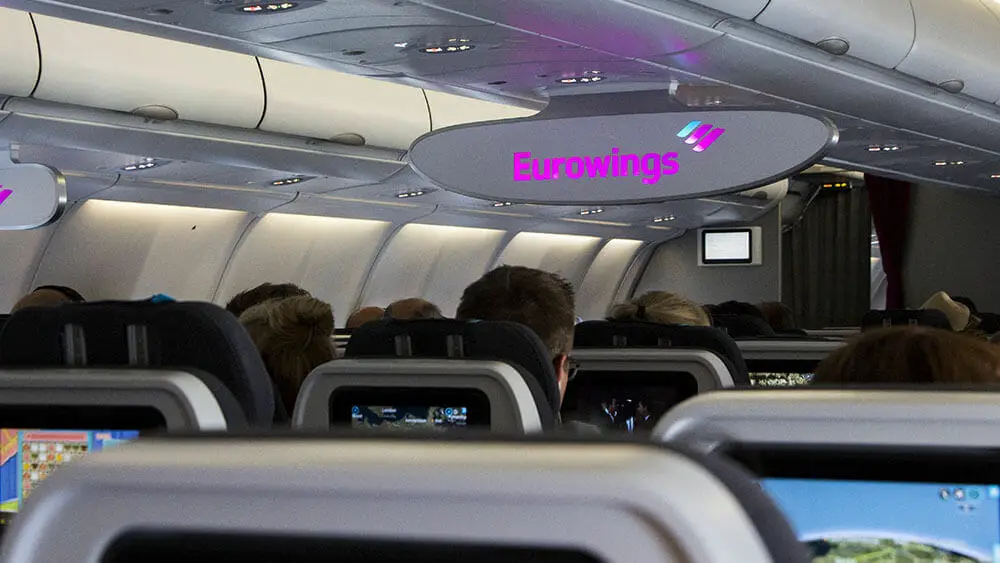
Eurowings
On our flight from Bangkok via Cologne to Dresden, Eurowings proved to be quite problem-free in terms of transporting our drone and the batteries. However, for some time quite a few suitcases got lost in Cologne, so we were glad that we had our drone in our carry-on backpack again.
- Carry-on bag dimensions: 55 x 40 x 23 cm
- Maximum carry-on bag weight: 8 kg
- LiPo battery regulations:
Up to 100 Wh: Allowed
100 – 160 Wh: A maximum of 2 spare batteries may be taken along
More than 160 Wh: Not allowed
Emirates
Emirates only allows drones in the checked baggage, spare batteries must be transported in the carry-on. The Emirates website states the following:
“For safety reasons, we can’t allow drones on board as cabin baggage. Drones can be accepted as checked-in baggage only. If you have a drone in your checked-in baggage you’ll be asked to either secure the Lithium batteries within the drone or remove the batteries and carry them in your cabin baggage. This regulation still applies even if you’re connecting to our flights from an airline that has accepted drones as cabin baggage.“
- Carry-on bag dimensions: 55 x 38 x 20 cm
- Maximum carry-on bag weight: 7 kg
- LiPo battery regulations:
Up to 100 Wh: Allowed
100 – 160 Wh: A maximum of 2 spare batteries may be taken along
More than 160 Wh: Not allowed
Finnair
- Carry-on bag dimensions: 56 x 45 x 25 cm
- Maximum carry-on bag weight: 8-10 kg, depending on ticket class
- LiPo battery regulations:
Up to 100 Wh: Allowed
100 – 160 Wh: A maximum of 2 spare batteries may be taken along
More than 160 Wh: Not allowed
Garuda
We used Garuda twice in Indonesia and didn’t have any problems with our copter or the LiPos. However, the machines on Flores were very small, so our backpacks didn’t fit in the upper baggage rack. Instead they could be placed under the seats.
- Carry-on bag dimensions: 56 x 36 x 23 cm
- Maximum carry-on bag weight: 7 kg
- LiPo battery regulations:
Up to 100 Wh: Allowed
100 – 160 Wh: A maximum of 2 spare batteries may be taken along
More than 160 Wh: Not allowed
Iberia
- Carry-on bag dimensions: 56 x 45 x 25 cm
- Maximum carry-on bag weight: Not information on weight limit
- LiPo battery regulations:
Up to 100 Wh: A maximum of 4 spare batteries may be taken along
100 – 160 Wh: A maximum of 2 spare batteries may be taken along
More than 160 Wh: Not allowed
Icelandair
- Carry-on bag dimensions: 55 x 40 x 20 cm
- Maximum carry-on bag weight: 10 kg
- LiPo battery regulations:
Up to 100 Wh: Allowed
100 – 160 Wh: A maximum of 2 spare batteries may be taken along
More than 160 Wh: Not allowed
KLM
- Carry-on bag dimensions: 55 x 35 x 25 cm
- Maximum carry-on bag weight: 12 kg, 18 kg in Business Class
- LiPo battery regulations:
Up to 100 Wh: Up to 20 spare batteries allowed
100 – 160 Wh: A maximum of 2 spare batteries may be taken along
More than 160 Wh: Not allowed
Lufthansa
- Carry-on bag dimensions: 55 x 40 x 23 cm
- Maximum carry-on bag weight: 8 kg
- LiPo battery regulations:
Up to 100 Wh: Allowed for personal use
100 – 160 Wh: A maximum of 2 spare batteries may be taken along after notifying the airline
More than 160 Wh: Not allowed
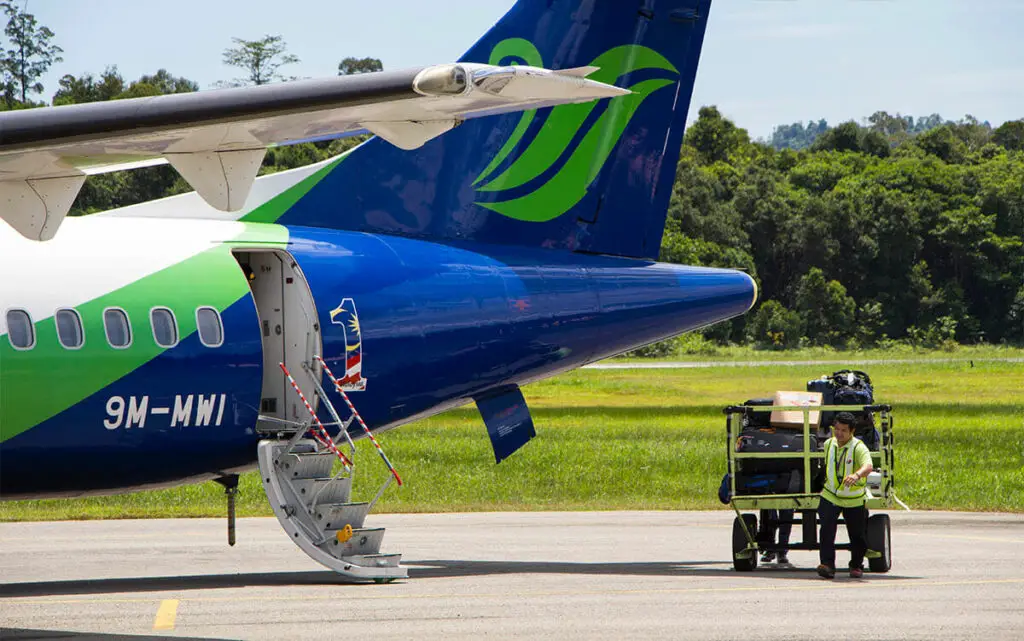
MASWings
- Carry-on bag dimensions: 56 x 36 x 23 cm
- Maximum carry-on bag weight: 7 kg
- LiPo battery regulations:
Up to 100 Wh: Allowed
100 – 160 Wh: A maximum of 2 spare batteries may be taken along
More than 160 Wh: Not allowed
Malaysia Airlines
- Carry-on bag dimensions: 56 x 36 x 23 cm
- Maximum carry-on bag weight: 7 kg
- LiPo battery regulations:
Up to 100 Wh: Allowed
100 – 160 Wh: A maximum of 2 spare batteries may be taken along
More than 160 Wh: Not allowed
Norwegian
We flew with Norwegian from Bangkok via Oslo to Berlin. We had our drone and the two spare batteries with us. The carry-on baggage was checked very thoroughly especially in Oslo. But our copter made it through without problems.
- Carry-on bag dimensions: 55 x 40 x 23 cm
- Maximum carry-on bag weight: 10 kg, 15 kg on some ticket classes, only 8 kg on flights to Dubai
- LiPo battery regulations:
Up to 100 Wh: Up to 20 spare batteries allowed
100 – 160 Wh: A maximum of 2 spare batteries may be taken along
More than 160 Wh: Not allowed
Qatar Airways
- Carry-on bag dimensions: 50 x 37 x 25 cm
- Maximum carry-on bag weight: 7 – 15 kg
- LiPo battery regulations:
Up to 100 Wh: Up to 20 spare batteries allowed
100 – 160 Wh: A maximum of 2 spare batteries may be taken along
More than 160 Wh: Not allowed
Ryanair
- Carry-on bag dimensions: 40 x 25 x 20 cm
- Maximum carry-on bag weight: 7 kg
- LiPo battery regulations: According to the airline’s website, a maximum of 15 lithium batteries is allowed per person. Batteries with more than 160 Wh will not be transported.
SriLankan Air
On our flight to Sri Lanka there were no problems with the copter.
- Carry-on bag dimensions: 46 x 36 x 20 cm
- Maximum carry-on bag weight: 7 kg
- LiPo battery regulations:
Up to 100 Wh: Allowed
100 – 160 Wh: A maximum of 2 spare batteries may be taken along
More than 160 Wh: Not allowed
Swiss
- Carry-on bag dimensions: 55 x 40 x 23 cm
- Maximum carry-on bag weight: 8 kg
- LiPo battery regulations:
Up to 100 Wh: Up to 20 spare batteries allowed
100 – 160 Wh: A maximum of 2 spare batteries may be taken along
More than 160 Wh: Not allowed
TUIfly
- Carry-on bag dimensions: 55 x 40 x 20 cm
- Maximum carry-on bag weight: 6 kg
- LiPo battery regulations: We haven’t found any information.
Turkish Airlines
- Carry-on bag dimensions: 55 x 40 x 23 cm
- Maximum carry-on bag weight: 8 kg
- LiPo battery regulations: We haven’t found any information.
United Airlines
- Carry-on bag dimensions: 56 x 35 x 22 cm
- Maximum carry-on bag weight: No information on weight limits.
- LiPo battery regulations:
Up to 100 Wh: Allowed
100 – 160 Wh: A maximum of 2 spare batteries may be taken along
More than 160 Wh: Not allowed
Wizz Air
According to the Wizz Air website, drones are not allowed on the plane. However, some Lithium batteries may be taken along in the carry-on baggage.
“CAN I TAKE MY DRONE/HOVERBOARD WITH ME?
No, unfortunately for safety reasons You are not allowed to take such devices neither on board, nor as checked in baggage.”
- Carry-on bag dimensions: 40 x 30 x 20 cm included
- Maximum carry-on bag weight: 10 kg
- LiPo battery regulations:
Up to 100 Wh: Allowed
100 – 160 Wh: A maximum of 2 spare batteries may be taken along after approval by the airline
More than 160 Wh: Not allowed
Have you ever taken your drone on a plane? Please leave us a comment and share your experience with us!
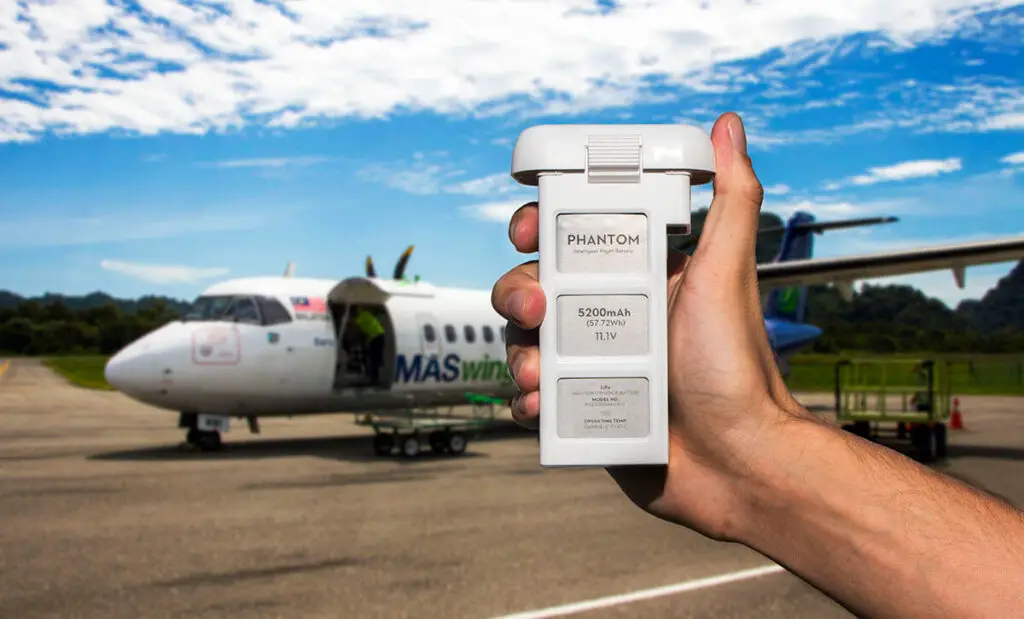

 EU-wide drone regulations: Classes of drones explained
EU-wide drone regulations: Classes of drones explained
 New EU-wide rules for drones from 2021
New EU-wide rules for drones from 2021
 EU-wide drone regulations: The Open category explained
EU-wide drone regulations: The Open category explained
 EU-wide drone regulations: The Specific category explained
EU-wide drone regulations: The Specific category explained
https://wizzair.com/en-gb/information-and-services/travel-information/electronic-devices-on-board
not allowed to bring it on board at all
Ah, what a shame. Thank you for sharing!
Do you know if the general rule is –
2 x Lipo up to 160 WH
AND
Up to 20 individual cells for example 18650 etc (for flashlight etc)
Is it.. either or can be both?
Thank you.
I recommend contacting your airline with this question. I suspect both are possible, but would play it safe.